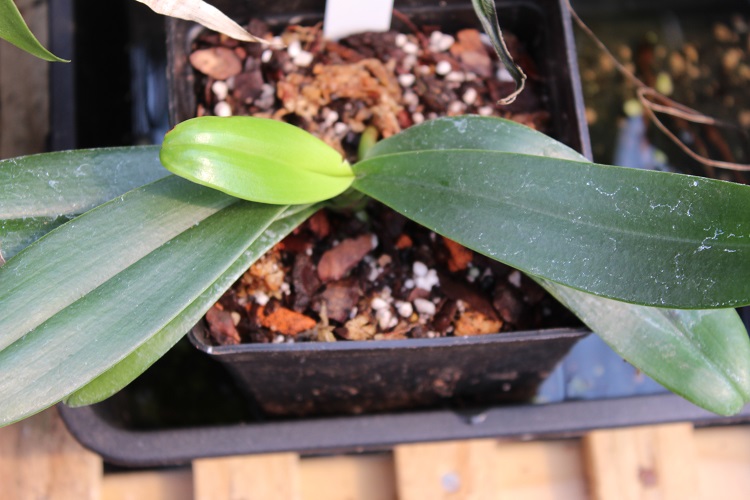 |
Sedirea japonica is a white flowered epiphytic orchid from Japan related to
Phalaenopsis that is said to tolerate frost. Irresistible. It has now been absorbed into Phalaenopsis proper. It doesn't tolerate frost at all. In the greenhouse all the leaves fell off my plant before December in a way that was both clear and fatal. I am unlikely to try again. Plants of the World online says: "The native range of this species is China (W. Yunnan, Zhejiang), Korea (Jeollanam-do), S. Central & S. Japan to Nansei-shoto. It is an epiphytic subshrub and grows primarily in the subtropical biome. Jay Pfahl says in his Internet Orchid Species Encyclopedia: "Found in Japan, the Ryukyu Islands, Korea and western Yunnan and Zhejiang provinces of China in open subtropical forests or cliffs along valleys at elevations of 600 to 1400 meters as a small sized, cool to cold growing species with a monopodial, very short stem carrying 5 to 8, narrowly elliptic to strap shaped, obtuse at the obscurely bilobed apex leaves that blooms in the spring and summer on a 7.2" [18 cm] long, curved, successively 6 to 10 flowered inflorescence. Adult plants branch freely and produce a number of inflorescence simultaneously. The orchid has many greenish white, sweetly lemon to ginger scented flowers with purple bars on the lip. This species needs to be mounted or potted in a coarse, fast draining medium and given cool to coldtemperatures, high humidity, semi-shade, and good air circulation." Ohwi's Flora of Japan records the species (as Aerides japonica) growing on Honshu from Izu province (approximately Tokyo) westwards and on Shikoku and Kyushu islads but it seems to have been rare even then and has certainly been declining in the north. The stronghold of the distribution is in the chain of subtropical islands, including the Ryuku Islands, that extend south west from the southern tip of Japan. Experience suggests that it is entirely subtropical, not tolerating cold at all. The species is developing a following among growers in Japan and wild collection of plants may have contributed to the species apparent decline. |
|